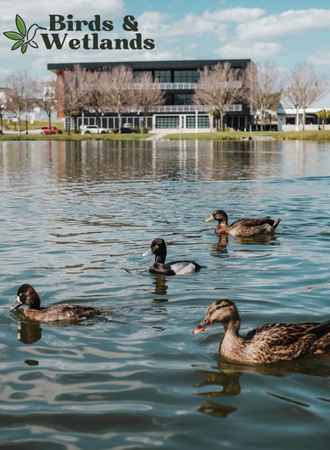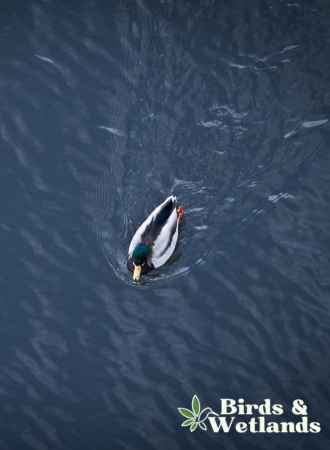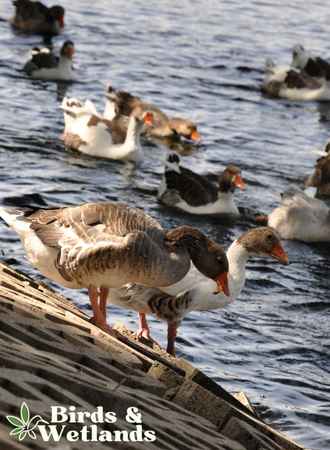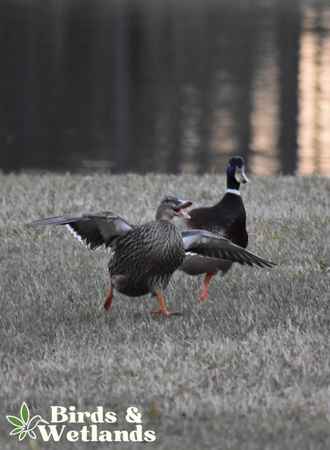Ducks are known for their ability to speed through the water with ease, but just how fast can a duck swim?
Ducks are speedy swimmers, with an average speed of about 4-5 miles per hour (6-8 kilometers per hour) under normal conditions. However, when threatened, some species can achieve much higher speeds. Their speed is largely due to their webbed feet, which act like paddles, and their streamlined body shape, which reduces resistance in the water.
Key Takeaways on How Fast Can Ducks Swim
Some ducks can swim underwater, while others swim above water.
Ducks can swim at an average speed of up to 6 miles per hour while the swimming speed of ducklings is around 0.6 to 1 mile per hour.
When ducks swim, they use their webbed feet to propel them through the water. Their buoyant bodies and hollow bones help keep them afloat, while waterproof feathers help keep them dry.
Can Ducks Swim Underwater?

Yes, ducks can swim underwater, and they do so with great skill and dexterity. In fact, ducks are versatile swimmers and have developed a variety of underwater foraging strategies.
Sea ducks, for instance, are good swimmers and among the most proficient divers among waterfowl and typically feed in waters between 10 and 65 feet deep, although some species may feed deeper.
Other ducks are less extreme but can still dive significantly deeper than the average human.
Many duck species can stay submerged longer and dive deeper than aquatic birds such as loons and grebes.
How Do Ducks Swim?

Ducks are excellent swimmers. Most waterfowl developed webbed feet to help them navigate wetland environments more easily than other animals. These specialized appendages allow waterfowl such as ducks to propel themselves through the water more efficiently while providing traction for intricate turns.
Webbed feet are normally flat, allowing ducks to use them as rudders to change direction or speed up when necessary instantly while swimming. To push more water, ducks the webbing between their toes spreads out on the down stroke.
Various swimming motions are used to propel a duck through the water. In general, the movement of a duck’s foot alternates; one leg will move backward while the other moves downward. While swimming, most waterfowl push both downward and backward with their feet and legs.
Moreover, ducks will use their webbed feet to push additional water behind them. Swimming ducks can maintain effective speed while expending minimal energy in this manner.
- Mallard: The most common wild duck, Mallards are excellent swimmers but their exact speed is not well documented.
- Pekin: These domestic ducks are good swimmers, but they are not known for their speed.
- Muscovy: This breed is more terrestrial and while they can swim, they prefer to stay on land.
- Runner Ducks (Indian Runner): Known for their unique upright stance, Runner Ducks can swim but they’re better known for their fast waddling on land.
- Khaki Campbell: This breed is an excellent swimmer and forager, but specific speed information is not commonly available.
- Rouen: These ducks are similar to Mallards in appearance and are good swimmers, but they’re larger and probably not as fast.
- Cayuga: Known for their beautiful iridescent feathers, Cayugas are good swimmers but their speed is not well-documented.
- Swedish Blue: Swedish Blues are known to be good swimmers but they are not renowned for their speed in the water.
- Call Duck: These are smaller ducks, and while they can swim, they are not typically bred for their swimming abilities.
- Wood Duck: Wood ducks are agile swimmers and flyers, often found in woodland habitats.
When Can Ducklings Swim?
There are several important factors to consider when it comes to encouraging baby ducks or ducklings to swim independently.
Initially, ducklings can start swimming as early as one week, although this is riskier than waiting until they are older. For ducklings to learn how to swim effectively and safely, the water they are introduced to must be warm but not too hot and shallow enough to walk in and out of if necessary.
The water must provide easy access to a heat lamp or other warmth source in the event the ducklings become chilled.
When introducing ducklings to swimming conditions, careful monitoring and preparation are required to guarantee their safety during swimming lessons.
FAQs on How Fast Can Ducks Swim
What Are the Different Types of Ducks?
Dabbling Ducks
A dabbling duck is also known as a paddling duck. The ability of dabbling ducks to feed on the surface of the water using only their long, flexible necks is well-known. These ducks float and include Mallard ducks, pintails, shovelers, teals and the gadwall duck and prefer shallow areas of open water with abundant aquatic vegetation.
When not feeding at the water’s surface, dabbling ducks have frequently been observed swimming and preening on semi-exposed land.
Diving Ducks

If you’ve seen ducks dive underwater, you probably wondering how they did it. Well, you probably witnessed a diving duck. As their name suggests, diving ducks can stay underwater for approximately one minute.
These diver ducks’ powerful feet and stiff tail feathers allow them to propel themselves through the water while hunting quickly. Common diving ducks of North America include mergansers such as the red-breasted merganser and scoters.
Perching Ducks
Perching ducks are a distinct subgroup of waterfowl, distinguished from many species of ducks by their ability to perch on trees, a characteristic that is not inherent in the waterfowl family. Perching ducks are grouped together with other dabbling ducks.
A perching duck is typically small compared to other duck species and can be identified by its short bills, legs and long toes with claws that allow it to perch in trees.
In North America, a wood duck and pintail duck are considered perching ducks.
How Fast Can Ducks Run?

How waterfowl fly, swim and run were interesting adaptations to their environments. Ducks’ swiftness is one characteristic that makes them such formidable birds. Even though they may not be as fast as other birds, such as geese or cranes, ducks can still reach speeds between 6 and 8 miles per hour. This ability allows most ducks such as migrating Mallards to easily outrun numerous predators who struggle to keep up with fast ducks.
Ducks utilize their speed it to locate food. The frequency with which ducks waddle quickly across wetland areas in search of insects and water plants demonstrates the importance of a swift gait for these agile birds.


